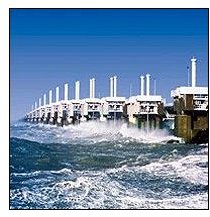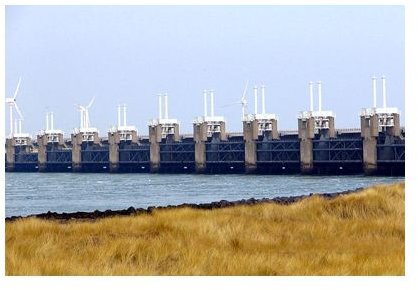What is Netherlands North Sea Protection Works?
Introduction
Building a dam across a river is not an easy task, and building a dam across the seas is even less of an easy task. However, civil engineering is a field that has helps people achieve some of the almost impossible tasks. One such task was done in the Netherlands by constructing a dam across the sea to protect the country from being inundated.
One third of the Netherlands is below the sea level. This means that even the normal tides from the North Sea, which covers most of the Netherlands coastline, has the capability of creating havoc in almost half of the country. In the earlier days, there were no dams or other protection structures across the North Sea, due to which the country used to remain in continuous threat of storms and high tides. Out of all the coastal areas, the Zuider Zee and the triangular area formed by the Rhine and Meuse rivers in the southwestern part of the country were the two main areas that were highly vulnerable. However, it was only in 1916, when the northern part of the country was hit by a disastrous storm that the government decided to dam a large part of the North Sea called the Zuider Zee, or in Dutch, the Zuiderzee. It was only is 1923 that the actual work on the dam started.
Construction
As decided, the government started the first dam on the incoming part of the Zuider Zee. The plan was to construct a dam and then drain the water from it. The construction process was initiated in two parts with help of traditional construction materials. First, huge clay boulders were put one on top of another to form parallel layers, which would be later filled in by sand, small rocks and other easily available filling materials. In order to prevent the sand and rocks from flowing away, huge mattresses made from brushwood were made and tied with the help of chains and heavy rocks to sink them in the space between the parallel layers. The Dam was proposed to be three hundred feet wide and twenty five feet high. Dredges, cranes and tugboats were used to erect the main dam.
In 1953, the country was faced with one more storm, which took 1800 lives. The country’s south western region, which was unprotected, was affected the most. It was only after this that the government decided to build one more dam across the North Sea to protect the southwest delta region. Originally, Oosterschelde, the south west region, was decided to be dammed by a non movable barrier but later on a movable barrier was decided to facilitate the fishermen trade.
This two mile long movable barrier of Oosterschelde estuaries was the hardest part of the construction process. The movable barrier was made of sixty five concrete piers, each weighing eighteen thousand tons. Moreover, barriers are attached with steel gates that weigh three hundred to five hundred tons, with roadway above it. Just like in the earlier dam, wooden mattresses were also put in while constructing this dam to prevent erosion; however, they were a bit technologically advanced and were equipped with special sandwich layers of sand and rock fragments. When completed in 1986, the dam connected two islands on each side of the delta.
These two dams together form the Netherlands North Sea Protection Works. They are supposed to be the most complex and highly sophisticated civil engineering wonders of all times. It is really too hard to find a structure throughout the world, which is as unique and as expensive as the North Sea Protection works.
They are supposed to be the most complex and highly sophisticated civil engineering wonders of all times. It is really hard to find a structure, throughout the world, that is as unique and as expensive as the North Sea Protection Works.
Construction

References
Image credits
